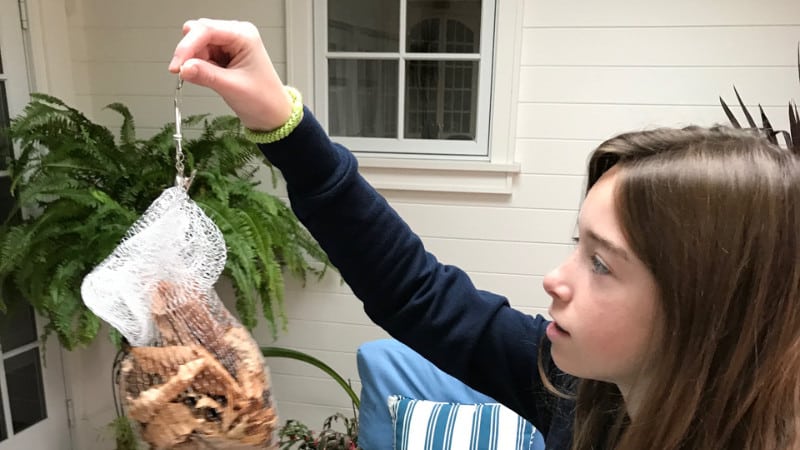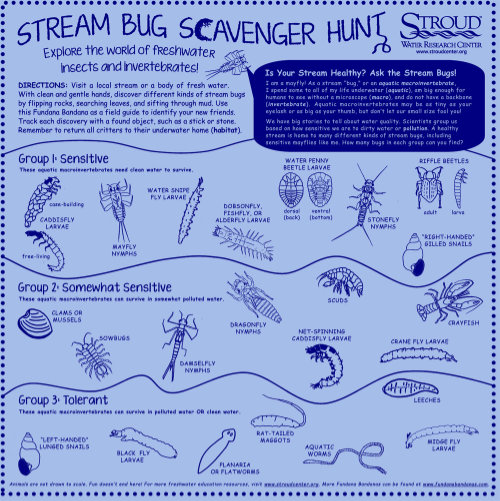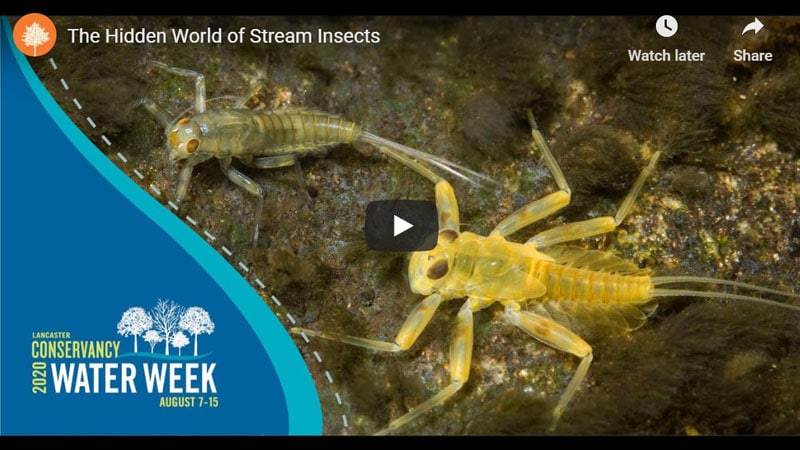Macroinvertebrate Resources
What Are Benthic Macroinvertebrates?
Benthic macroinvertebrates are animals without a backbone, large enough to be seen with the naked eye, that live on the bottom of streams, lakes, and rivers. They include crustaceans and worms, but most are aquatic insects.
Beetles, caddisflies, stoneflies, mayflies, hellgrammites, dragonflies, true flies, and some moths are among the groups of insects represented in streams. They are an essential link in the food web between the producers (e.g., leaves and algae) and higher consumers such as fish. Benthic macroinvertebrates are one of the most commonly used living water-quality indicators because:
- They are fairly easy to sample and identify.
- They are sensitive to pollution and changes in their habitats.
- They have a relatively long life cycle so they act as water quality indicators over time.
- They are common in most streams or rivers.
Photo Gallery

View more than 50 macroinvertebrate photos by Stroud Water Research Center Entomologist David H. Funk.
Identification Key
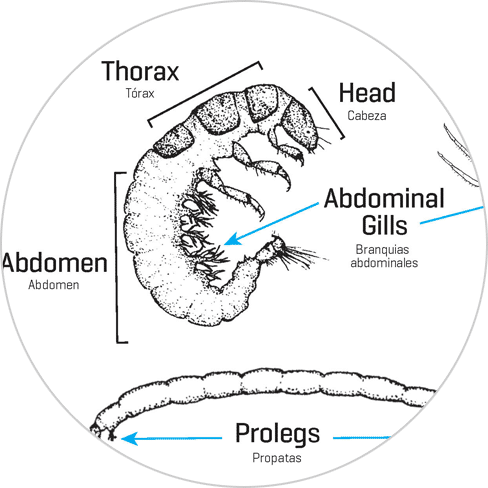
Our dichotomous key helps you identify aquatic macroinvertebrates you found in a stream.
Discovery Tank
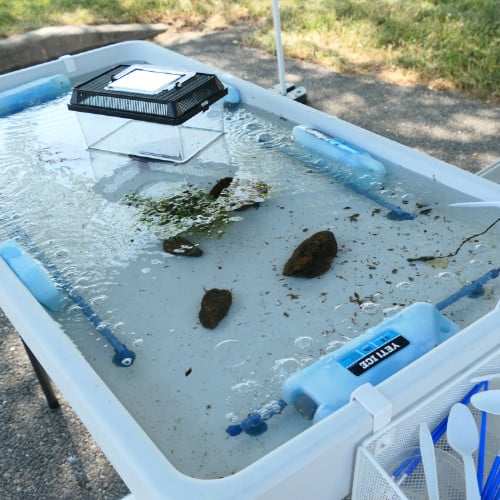
Not everyone can access a stream to learn about aquatic life, but with a discovery tank, the stream can come to them!
Leaf Pack Network®
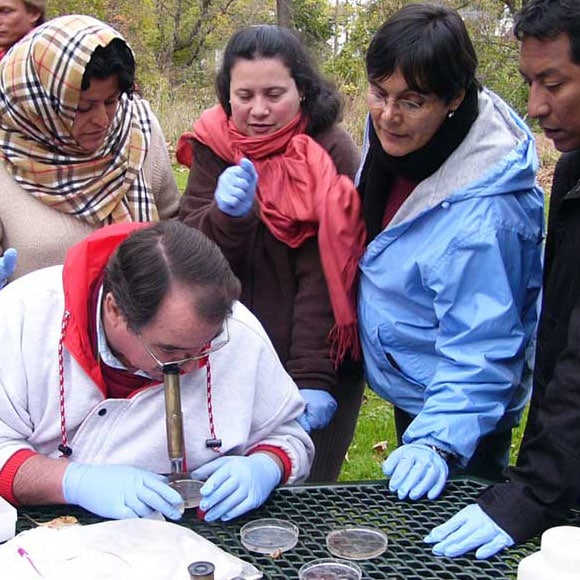
Learn about a simple experiment that uses tree leaves and aquatic macroinvertebrates to determine the health of your local stream.
Rock Pack Experiment

The Rock Pack Experiment combines STEM topics in stream ecosystems through the world of the net-spinning caddisfly.
Monitor My Watershed
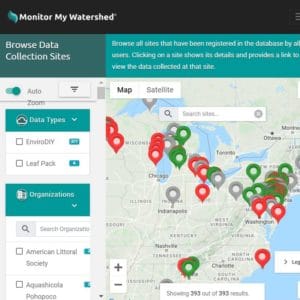
View macroinvertebrate data from the Leaf Pack Network and Rock Pack Experiment. Help resources are available here.
Water Quality Mobile App
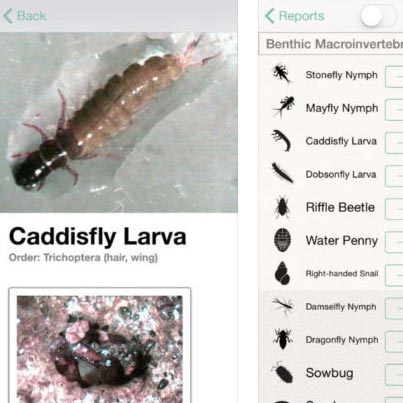
Log and share data collected in the field and interpret it through learning pop-ups. Available for Apple and Android devices.
3D Printable Designs
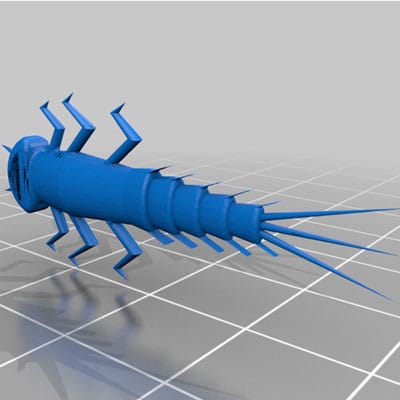
Download designs created by Stroud Water Research Center in collaboration with Unionville-Chadds Ford School District.
Macroinvertebrates.org
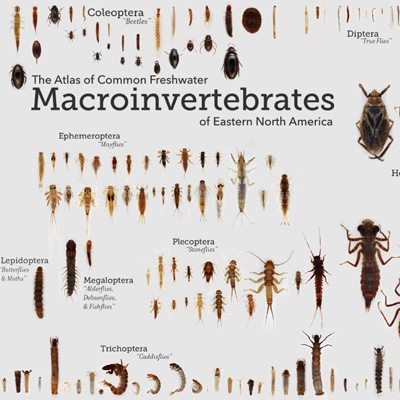
Explore this resource for aquatic insect identification to support citizen science identification activities.
Taxonomic Certification Program
This Society for Freshwater Science program certifies skilled persons to provide aquatic invertebrate identifications in North America.
Guide Books
The following books are recommended resources. Check your local library; they are also available for purchase from online booksellers.
- McCafferty, W. P. 1981. Aquatic entomology: the fishermen’s guide and ecologists’ illustrated guide to insects and their relatives. Jones and Bartlett Publishing Company, Boston, Massachusetts.
- Voshell, J. Reese. 2002. A guide to common freshwater invertebrates of North America. The McDonald & Woodward Publishing Company, Blacksburg, Virginia.
Stream Sampling Protocols and Fact Sheets
- Didymo Fact Sheet
- EPA Volunteer Stream Monitoring: A Methods Manual
- EPA Rapid Bioassessment Protocols for Use in Streams and Wadeable Rivers
Stream Sampling License and Permit Information
Citizens from outside Pennsylvania should consult with the appropriate state agency for permit requirements. Pennsylvania law requires anyone 16 years of age or older collecting aquatic organisms for any reason to have a valid fishing license and follow current Pennsylvania Fish & Boat Commission regulations. High school and undergraduate college students are exempt from the license requirement if their teacher/educator applies for and is issued an Educational Aquatic Field Study Permit. For more information, visit the Pennsylvania Fish & Boat commission website.
Just For Fun
The Pennsylvania Fish and Boat Commission ran a fun Facebook quiz that featured a number of photographs by Stroud Center Entomologist David Funk. Try your hand at the #MysteryMacro Quiz!
Macroinvertebrate News

Watershed survey of streams in western Bhutan with macroinvertebrates, water chemistry, bacteria and DNA barcodes
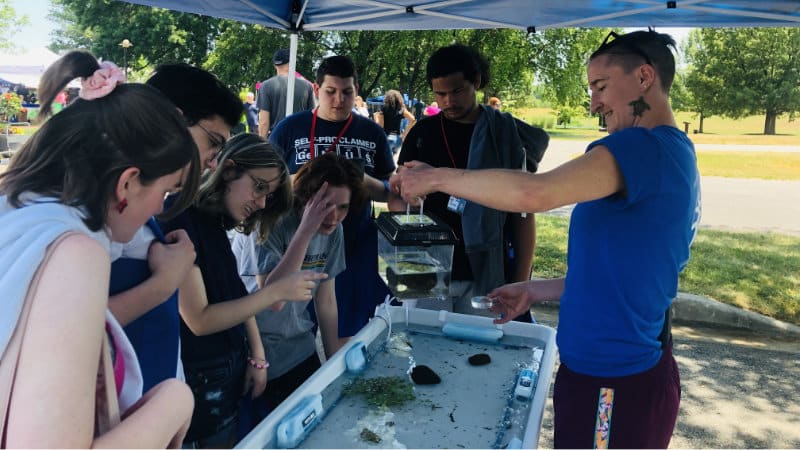
New Traveling Discovery Tanks Bring Stream Life to You!

Watershed Education Makes a Splash at Public Library
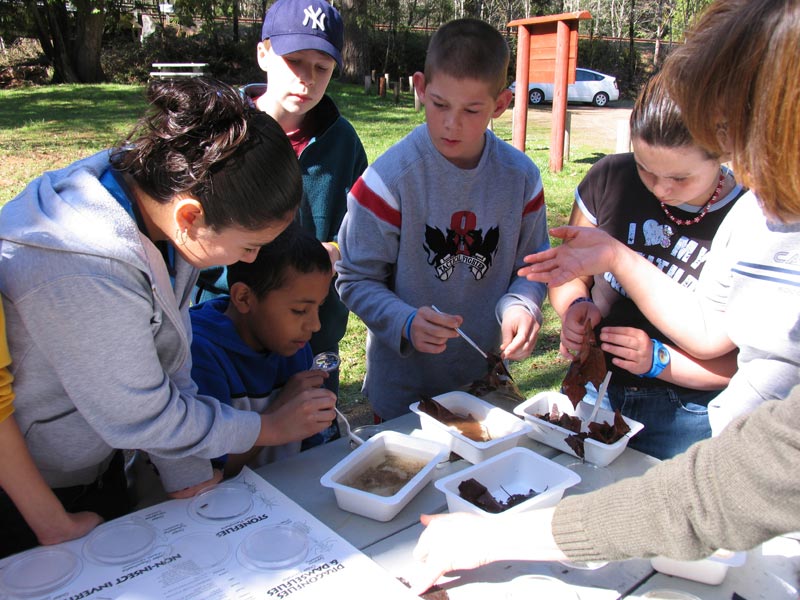
Discover the Health of Your Local Stream With the Leaf Pack Network!
